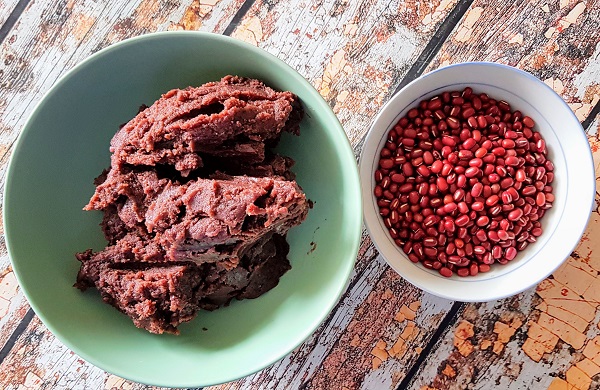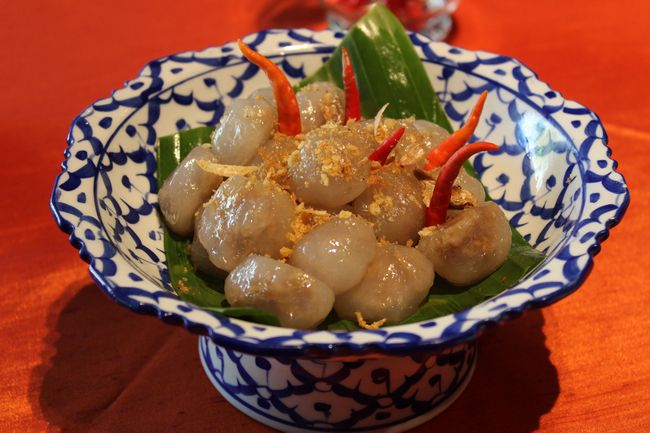How to Cook Char Kway Teow (CKT)

I asked a quick question online today and based on the Facebook and Twitter responses, the one Malaysian dish that most people would like to learn to make is Char Kway Teow, ie. stir-fried fresh rice noodles. At least among my customers/followers anyway – so here’s my take on it.
First, a quick rundown of some CKT facts – I feel I need to cover all bases since I’ve come across so much misinformation about what constitutes an ‘authentic’ CKT, both –
– online – yes, I’m referring to the uber-critical bloggers/self-appointed restaurant reviewers who can’t get their facts straight (I’m actually defending my fellow restaurateurs here, some of whom have been unjustly maligned)
– as well as off-line (here I’m pointing at the douche who thought spending several years in Bangkok, Thailand – his own claim – presumably hanging out in go-go bars – made him the Malaysian food expert over a native-born-and-raised like me – thanks for walking off after paying and refusing to claim the CKT you ordered, btw, because I used the ‘wrong’ noodles – I was quite happy to re-sell it to the next person)
By the way, the term ‘Char Kway Teow’ is Hokkien for, well, Fried Rice Noodles. It can be spelled different ways or pronounced differently depending on what dialect of Chinese is used, or how it’s romanised.
There are 2 main versions – the more well-known Penang CKT, and the one I do ie. from Kuala Lumpur southwards.
Penang CKT –
– uses a thin-cut fresh rice noodle – which looks similar to the rice sticks used in Pad Thai.
– is much lighter in colour – again, reminiscent of Pad Thai in appearance (but not in flavour).
(Alright, I hate drawing parallels between Thai food and Malaysian, since there’s enough confusion out there as it stands. I love Thai food, but it gets old when we keep getting asked if we do Pad Thai or what colour curry our rendang is – ‘is it a green curry, or a red curry’ – etc. To the woman who reeled off a string of Thai dishes to us before asking if we had Pad Thai, to whom my associate wearily said ‘no, but we have Pad Malaysian’, whereupon you said that sounded interesting and you’d like some Pad Malaysian to take to a lunch party you were attending – I’m sorry if your friends looked confused when you announced you’d brought some Pad Malaysian with you. We weren’t being mean, we just needed some light relief). But, I digress.
‘KL’ CKT (for want of a better expression) –
– uses a broader fresh rice noodle, and sometimes has some hokkien (ie. fresh yellow/egg noodles) thrown in.
– is quite a lot darker in colour.
Traditionally, CKT contains the following (I omit the porky stuff in my version since I don’t eat pork)
– fresh rice noodles (obviously)
– garlic
– garlic chives
– beansprouts
– chilli paste, made primarily from dried chillies that’ve been boiled and blended with a little water
– eggs
– chinese sausage (those dried, waxy things you see strung up in Asian grocery stores – aka lup cheong)
– blood cockles (hard to get hold of in Australia, and even then, it’s usually a variety that’s quite a lot larger and tougher than what we get back in Malaysia, plus it’s only available during the warmer months)
– sliced fishcake
– lard
– pork crisps
Non-standard ingredients/cooking method I observed on my last trip to Penang –
– prawns
– fresh crab meat
– using a charcoal stove
Non-standard ingredients I use – due to customer demand/practicality/the lack of availability of the more traditional stuff like cockles–
– chicken
– seafood including prawns, calamari, and, at market events – marinara mixes combined with prawns
– a ‘plain’ CKT (ie. noodles & vegies only). This confuses a lot of Malaysians who think ‘plain’ on my menu means it comes with chinese sausage, fishcake etc. etc. – no, sorry, mine doesn’t
– baby bok choy
– vegetarian (I use a different sauce for this)
– sambal belacan (shrimp paste chilli)
– fried shallots
What I DON’T usually do is cook it with chilli paste – this hails back to my start at markets/festivals, where I have to cook more than one serve at a time and do it quickly – it makes it that much harder if one person wants it spicy and the next can’t tolerate chilli at all and the third only wants a little heat in it – so I just offer sambal belacan on the side if they want it hot.
What gives CKT the ‘je ne sais quoi’ factor? Many theories abound, including –
1. using lard – out of the question for me (the pork thing again), but that’s been debunked anyway. Even some of the most famous CKT stalls nowadays have stopped using lard in theirs.
2. cooking with charcoal – would only apply if it generated a strong enough heat to achieve that elusive ‘wok breath’ I’ve talked about in a previous post. Which brings us to –
3. using high heat – this is where most home cooks fail to nail it, since most households (yes, even Asian ones) aren’t equipped with high pressure gas burners. So do invest in one if you can – it’ll set you back about $170 – Google ‘Rambo high pressure stove’ – stick it on your balcony or backyard like you would a BBQ.
What goes in the sauce?
Light Soy and Thick Soy are the base ingredients. I brew my own mixture, which contains a few other things including Fish Sauce and Chicken Stock Powder (yes, non-std). No Kicap Manis (Sweet Soy) in mine, for those who’ve been asking, nor Oyster Sauce – though others may have it in their versions. I’ll get round to posting my full sauce recipe one day, but in the meantime I do sell the sauce, for those who aren’t aware, and I even have a vegetarian version 🙂
So, before much further ado, here’s my recipe + cooking video showing how it’s done – and if you have a strong enough heat source, it shouldn’t take you more than 3-4 minutes to cook up a serve. I’m sure I’ve mentioned it before, but do it in small batches (1-2 serves each time) for optimal flavour.
Also, especially if you don’t have that strong a heat to cook it on, add the sauce (which you shouldn’t need more than a TBS or two of, esp. if using mine) in stages. And use a thin wok/pan to help with the heat transfer. Good luck, and Selamat Makan (Happy Eating) 🙂
CHAR KWAY TEOW RECIPE
60ml vegetable oil (less if you’re not using a high pressure burner)
250g fresh rice noodles (the ones I’ve bought whilst in the US need to be blanched/microwaved to soften them up)
1 TBS garlic
Your choice of meat/seafood
1 ½ TBS CKT sauce
Small clutch of garlic chives, cut into 2-inch lengths
Fistful of beansprouts
One egg






I had your beautiful CKT last Saturday and sat quietly around the back of the school… just savouring the lovely meal… I love your chilli paste accompaniment and yours is comparaible to the Malay/Chinese Kitchen on Hunter St in the City which I think is awesome… thanks for sharing your CKT sectrets
Enzo
I have come across many types of CKT and was once “confuse” too! Thanks for the video and post, dun think I have the heat & tool to Mak this at Home. will try at ur place soon!
Nice! Thanks for sharing the info and recipe with us. I miss having the ckt at the markets.. Time to get to your restaurant soon me thinks
Aw thanks! Definitely let me know if you do come in so I can come out and say hello 🙂
I love CKT.. must try it at yours soon. Thanks for sharing!
Thanks Mary, let me know if you come in – would love to say Hello 🙂